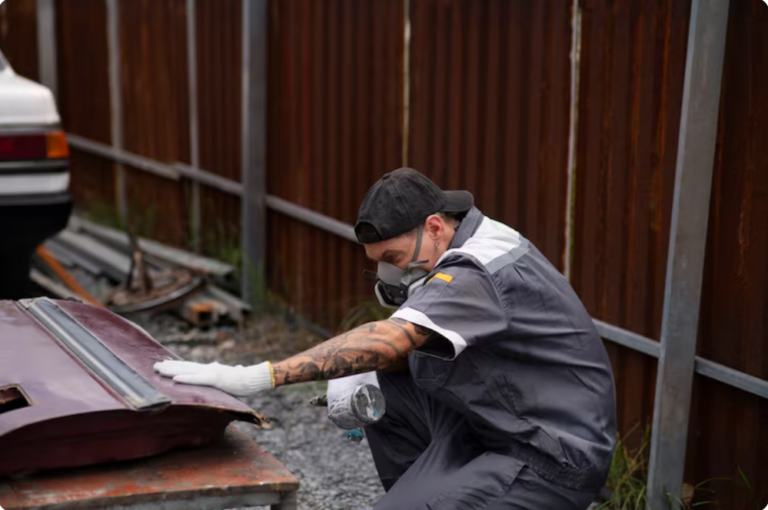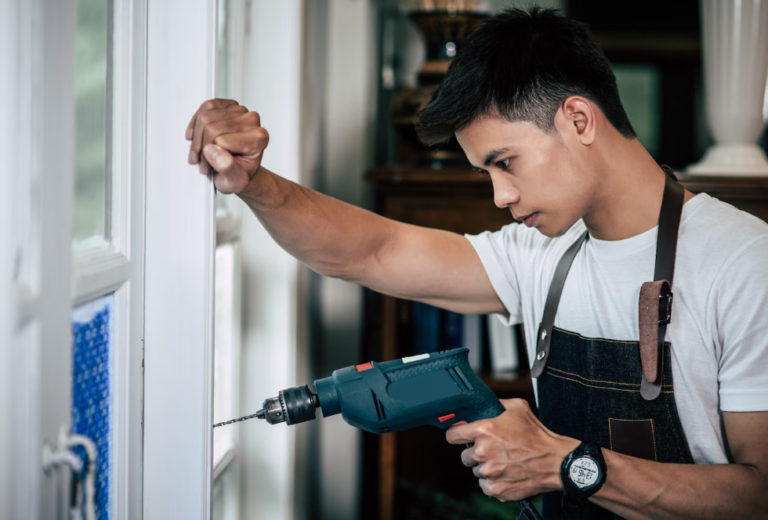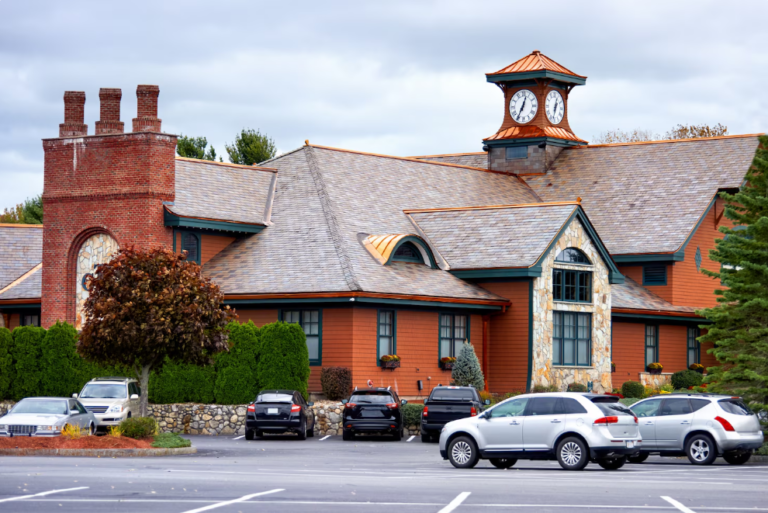The Truth About Custom Bathroom Vanities in Modern Homes

The True Cost of Custom Bathroom Vanities
When you’re planning a bathroom remodel in Las Vegas, the idea of a custom bathroom vanity can sound really appealing. You picture something perfectly tailored to your space and style. But before you jump in, let’s talk about what that custom label really means for your wallet and your sanity. It’s not just about the sticker price; there’s a whole lot more to consider.
Understanding the Price Tag Beyond the Sticker
Sure, a custom bathroom vanity promises uniqueness. You get to pick the exact dimensions, materials, and finishes. But this level of personalization comes with a significant cost. While a good quality, ready-made vanity might cost you anywhere from $800 to $2,000, a custom one can easily start at $2,000 and climb all the way up to $10,000 or even more. This price difference isn’t just for the ‘custom’ label; it reflects the individual design, material sourcing, and skilled labor involved in creating something one-of-a-kind. You’re paying for the attention to detail and the bespoke nature of the piece.
Hidden Expenses in Custom Vanity Projects
Beyond the initial quote for your custom bathroom vanity, there are often other costs that can sneak up on you. Think about design fees if you’re working with a designer, or the cost of special-order hardware or unique countertop materials that aren’t readily available. Installation can also be more complex and costly if the plumbing or electrical layout needs adjustments to accommodate your custom design, which adds to the bill. Sometimes, unexpected issues arise during installation, like needing to modify walls or subfloors, which can quickly inflate the budget. It’s wise to set aside a contingency fund, maybe 10-20% of your estimated cost, for these potential surprises.
Comparing Custom Costs to High-Quality Prefab Options
It’s easy to get caught up in the allure of custom, but let’s look at the alternatives. Many manufacturers now offer high-quality, prefabricated vanities that rival custom options in terms of materials and style. You can find vanities made from solid wood, with durable countertops like quartz, and featuring soft-close drawers and doors, all without the custom price tag. For example, a well-made prefab vanity might cost $1,500 to $3,000. When you compare this to a custom vanity that could easily be $5,000+, you have to ask if the added benefits of custom truly justify the expense. Often, the difference in quality is minimal, especially when you’re looking at reputable prefab brands.
The perceived value of a custom bathroom vanity often outweighs its actual benefits. While personalization is nice, the significant jump in cost, potential for hidden expenses, and the availability of high-quality prefab alternatives mean custom isn’t always the smartest financial choice for your bathroom remodel.
Navigating Lead Times and Installation Complexities
When you decide to go custom for your bathroom vanity, you’re signing up for a longer journey than you might expect. It’s not just about picking out a style and having it show up next week. There’s a whole process involved, and it can definitely throw a wrench in your renovation timeline if you’re not prepared.
The Extended Wait for Custom Creations
The biggest hurdle with custom vanities is the waiting game. Unlike picking something off the shelf that you can take home that day, custom pieces need to be built. This means design time, material sourcing, fabrication, and then finishing. Depending on the complexity and the maker’s schedule, this can easily stretch into weeks, sometimes even months. If you have a tight renovation schedule, this extended lead time can be a real problem. It’s not uncommon to wait 6 to 12 weeks, and that’s before it even gets scheduled for installation.
Here’s a rough idea of what that timeline might look like:
- Design & Approval: A few days to a week, depending on how quickly you make decisions.
- Material Sourcing: Can take a week or two, especially if special materials are needed.
- Fabrication: This is the longest part, often 4-8 weeks.
- Finishing & Curing: Another week or so for paint or stain to dry properly.
- Delivery Scheduling: Coordinating with the installer.
Installation Challenges and Potential Delays
Once your custom vanity finally arrives, the installation itself can bring its own set of headaches. Because custom vanities are built to fit a specific space, there’s less room for error, but when errors happen, they’re costly. If measurements are slightly off, or if the plumbing in your bathroom isn’t exactly where the builder assumed it would be, you could be looking at:
- Plumbing Modifications: Adjusting pipes or drains to match the vanity’s configuration.
- Wall Adjustments: Sometimes, minor framing or drywall work is needed to make it fit perfectly.
- Countertop Re-cuts: If the countertop isn’t quite right, it might need to be sent back for adjustments, adding more time.
- Electrical Rerouting: If you’re adding new lighting or outlets near the vanity, this can complicate the install.
These aren’t minor hiccups. They can add days or even weeks to your project and, of course, increase the overall cost. It’s a domino effect – one small issue can delay everything else.
The allure of a perfectly tailored vanity can sometimes blind homeowners to the practical realities of its creation and installation. What seems like a simple piece of furniture can involve intricate planning and potential complications that extend well beyond the initial design phase.
Streamlined Installation with Prefabricated Vanities
On the flip side, prefabricated vanities offer a much simpler path. They come ready to go, often in standard sizes that fit most bathroom layouts. The installation is usually straightforward:
- Unbox: Carefully remove the vanity from its packaging.
- Position: Place it in the designated spot.
- Connect Plumbing: Hook up the water supply and drain.
- Secure: Attach it to the wall if necessary.
This process typically takes a few hours, not weeks. While you might still need a plumber for the connections, the complex custom fitting and fabrication steps are completely bypassed. This speed and simplicity can be a lifesaver for busy homeowners or those who just want their renovation finished without unnecessary delays.
Quality and Durability: Custom vs. Off-the-Shelf
When you’re looking at bathroom vanities, the big question always comes up: should you go custom or pick something ready-made? It’s not just about looks; it’s about how well it’s built and how long it’ll actually last. The materials and how they’re put together really make a difference in the long run.
Materials and Craftsmanship: What You’re Really Paying For
Custom vanities often boast about using premium materials and skilled craftsmanship. You might see solid hardwoods, high-grade plywood, or special finishes. The idea is that this superior construction means it’ll hold up better over time. With off-the-shelf options, you’ll find a mix. Some are quite well-made with decent materials, while others might use particleboard or thinner veneers that don’t stand up as well to daily use, especially in a damp bathroom environment.
Here’s a quick look at what you might find:
- Custom: Often uses solid wood frames, furniture-grade plywood for panels, and premium hardware like soft-close hinges. Joinery techniques might be more robust, like dovetail drawers.
- Prefab: Can range from solid wood and plywood construction to MDF or particleboard with laminate or veneer finishes. Hardware quality can vary widely.
The price difference often reflects the quality of the wood, the type of joinery used, and the finish applied. Custom builders can select specific wood grains and ensure a more consistent, durable finish.
Moisture Resistance and Long-Term Performance
Bathrooms are naturally humid places. Water splashes, steam from showers – it all adds up. How a vanity handles moisture is key to its lifespan. Custom vanities can be built with moisture-resistant woods and sealed with finishes specifically designed for bathroom conditions. This can prevent swelling, warping, and peeling that plague lower-quality vanities. Prefabricated vanities vary greatly. A well-made, higher-end prefab unit might have decent moisture resistance, but cheaper models can start to show wear and tear much faster. If a prefab vanity isn’t properly sealed or uses materials that absorb moisture, you could be looking at problems sooner rather than later.
Avoiding Common Pitfalls of Mass-Produced Vanities
Mass-produced vanities, especially the budget-friendly ones, can have a few common issues. You might find drawers that don’t slide smoothly, doors that sag, or finishes that chip easily. Sometimes, the internal construction isn’t very sturdy, leading to a wobbly feel. Another common problem is the limited depth of drawers, which can make storing larger items tricky. While custom vanities aim to avoid these issues through better design and construction, it’s still important to ask about the specifics of how they’re built. Even custom pieces can have design flaws if not planned carefully. However, the risk of poor construction is generally lower with a reputable custom builder compared to a mass-produced item.
Style and Functionality: Achieving Your Dream Bathroom
When you’re thinking about your bathroom remodel, the vanity is a big deal. It’s not just a place to stick a sink; it’s a major piece of furniture that sets the tone for the whole room. You want it to look good, obviously, but it also has to work for your everyday life. Getting the right balance between how it looks and how it functions is key to creating a bathroom you’ll actually love using.
Personalized Style Without the Custom Price
Lots of people think custom means you get total freedom, and that’s true, but you can get a really unique look without going fully custom. Think about semi-custom options. These let you pick from a range of sizes, finishes, and door styles, and then they’re put together for you. It’s a good middle ground. You can also find some really stylish off-the-shelf vanities these days. Look for clean lines, interesting hardware, or unique color options. Sometimes, just changing out the handles on a standard vanity can make a huge difference.
Maximizing Storage and Usability
Bathrooms, especially smaller ones, can get cluttered fast. Your vanity is your main storage hub. Think about what you need to store: toiletries, cleaning supplies, extra towels, hair dryers? A vanity with deep drawers might be better for larger items, while one with smaller, divided drawers is great for makeup and smaller bits. Some vanities have built-in organizers or even pull-out shelves, which are super handy. Don’t forget about the space under the sink. Some designs offer more usable space than others.
Here are some storage ideas to consider:
- Deep Drawers: Perfect for storing bulkier items like hair dryers or cleaning bottles.
- Adjustable Shelves: Let you customize the space for different-sized items.
- Integrated Organizers: Many vanities now come with built-in dividers for smaller items like makeup or toothbrushes.
- Open Shelving: Can be great for displaying decorative items or frequently used towels, but can also lead to clutter if not managed.
Choosing the Right Vanity for Your Bathroom Remodel in Las Vegas
When you’re picking out a vanity, especially if you’re in a place like Las Vegas where humidity can be a factor, material matters. Solid wood or good-quality plywood holds up better against moisture than particleboard. Also, think about the size of your bathroom. A huge double vanity might look amazing in a large master bath, but it could overwhelm a small powder room. Measure your space carefully, including doorways and hallways, to make sure the vanity you choose will actually fit when it arrives. Consider the plumbing hookups too – you don’t want to find out later that the sink placement won’t work with your existing pipes.
The bathroom is a high-traffic area that deals with a lot of moisture and temperature changes. The furniture in this room needs to be built to handle that. Choosing materials and designs that are durable and easy to clean will save you headaches down the road, no matter how stylish they look initially.
Here’s a quick look at common vanity types:
| Vanity Type | Pros | Cons |
| Freestanding | Easy to install, can move later | May have gaps, less integrated look |
| Wall-mounted | Saves floor space, modern look | Requires strong wall support, harder install |
| Pedestal | Minimalist, good for small spaces | Very little storage |
| Console | Open feel, easy access to plumbing | Limited storage, items can get dusty |
Resale Value and Long-Term Investment
When you’re thinking about a bathroom remodel, it’s easy to get caught up in the idea that a custom vanity is automatically a smart investment that will pay off big time when you sell your house. And sure, a beautiful bathroom can definitely make a home more appealing to buyers. But does the vanity itself, especially a custom one, really add that much to the bottom line?
The truth is, most potential buyers aren’t going to be swayed by a custom vanity. They’re more interested in the overall look and feel of the bathroom, and whether it meets their basic needs. While a well-designed bathroom can certainly boost your home’s marketability, the vanity is rarely the star of the show. In fact, a super unique or trendy custom design might even turn some buyers off if it doesn’t match their taste or feels dated quickly. Many people prefer a more classic, adaptable style, which you can often find with high-quality prefab options without the custom price tag.
Do Custom Vanities Truly Increase Home Value?
It’s a common assumption that custom means higher value, but it’s not always that straightforward. While a well-executed custom vanity can add a touch of luxury, its impact on resale value can be hit or miss. Buyers often look for practical, timeless designs that they can easily live with or update themselves. A vanity that’s too specific to your personal style might not appeal to a broad range of buyers, potentially limiting your market. Think about it this way: a neutral, well-built vanity is usually a safer bet for attracting more interest than something highly personalized.
The Appeal of Timeless Design for Buyers
Buyers generally want a home that feels move-in ready and doesn’t require immediate major changes. A bathroom with a clean, functional, and stylish vanity – whether custom or a great prefab piece – contributes to this. However, a design that’s too niche or overly elaborate might not age well. Opting for a more classic look, perhaps with a high-quality prefab vanity that has clean lines and durable materials, can be more appealing to a wider audience. This approach often provides a similar aesthetic without the custom cost and potential for buyer hesitation.
Smart Investments for Your Bathroom Remodel
When planning your bathroom renovation with resale in mind, focus on elements that have broad appeal and offer lasting quality. This might mean investing in a really solid, well-made vanity that has a timeless design, even if it’s not custom-made. Consider:
- Material Quality: Look for vanities made from solid wood or high-quality plywood that can withstand moisture. This is a sign of durability that buyers appreciate.
- Functional Layout: A vanity with smart storage solutions, like well-organized drawers and ample counter space, is always a plus.
- Neutral Aesthetics: Choose finishes and colors that are versatile and easy to match with different decor styles. This makes it simpler for a new owner to envision their own belongings in the space.
Maintenance and Potential Regrets
So, you’ve got this beautiful, custom bathroom vanity. It looks amazing, right? But now comes the part where you actually have to live with it. And sometimes, that’s where the shine starts to fade a little. Let’s talk about what happens after the installation dust settles.
Caring for Custom Materials
Custom vanities often use unique materials or finishes that look fantastic but can be a bit fussy. Think about exotic wood grains or special lacquers. These aren’t your standard laminate or particleboard. They might need specific cleaners, and you have to be extra careful about water spills or harsh chemicals. Treating these materials correctly is key to keeping your vanity looking good for years.
Here’s a quick rundown of what to watch out for:
- Wood Finishes: Some woods can be sensitive to moisture. Wiping up spills immediately is a must. Avoid abrasive cleaners that can scratch the finish.
- Stone Countertops: While durable, natural stone can stain. Sealing it regularly is important, and you’ll want to use pH-neutral cleaners.
- Specialty Paints/Lacquers: These can be beautiful but might chip or fade if not cared for properly. Stick to gentle cleaning methods.
It’s not rocket science, but it does require a bit more attention than a basic vanity you might find at a big box store.
Frequently Asked Questions
Why are custom bathroom vanities so expensive?
Custom vanities cost more because they are made just for you, by hand. This means more time and effort go into designing and building them. Plus, you often get to pick special materials and finishes, which also adds to the price. It’s like ordering a tailor-made suit versus buying one off the rack – the custom one costs more because it’s unique and fitted perfectly.
How long do I have to wait for a custom vanity?
Waiting for a custom vanity can take a while, usually between 6 to 12 weeks, and sometimes even longer if the materials are hard to find. This is because each one is built to order. In contrast, you can often get a ready-made vanity much faster, sometimes within just a few days.
Are custom vanities really better quality than store-bought ones?
Not always. While custom vanities can use top-notch materials and be built with great skill, many regular vanities sold in stores are also made with good materials like solid wood and have nice features like soft-close drawers. You can find high-quality options without the custom price tag if you look carefully.
Do custom vanities add more value to my home when I sell it?
It’s not a guarantee. While a nice bathroom can make a home more appealing, a super unique or trendy custom vanity might not be what every buyer wants. Buyers often prefer simpler, classic styles that are easier to live with. A well-chosen, good-quality regular vanity might be a safer bet for adding value.
What are the biggest problems with custom vanities?
The main issues are the high cost, the long wait time, and the fact that they can be complicated to install. Sometimes, the special design you wanted might not be as practical as you thought once you start using it. Also, if something breaks, fixing a custom piece can be harder and more expensive than fixing a standard one.
Can I get a stylish and functional vanity without going custom?
Absolutely! There are tons of stylish, high-quality vanities available that aren’t custom-made. You can find many different sizes, styles, and finishes in stores or online. By carefully choosing a pre-made vanity that fits your space and storage needs, you can get a beautiful and practical bathroom without the extra cost and hassle of a custom order.





